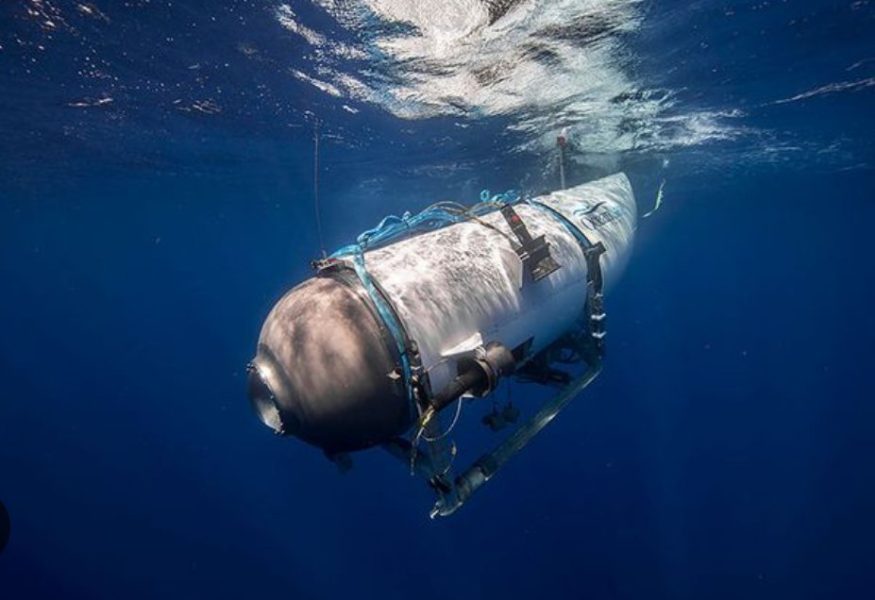
Search for Titan submersible | Pilot, crew believed to be dead: Expedition company

The company leading the Titan submersible trip says the five missing crew members are believed to be dead.
OceanGate Expeditions on Thursday (June 22) says its pilot and chief executive Stockton Rush, along with passengers Shahzada Dawood and his son Suleman Dawood, Hamish Harding, and Paul-Henri Nargeolet have sadly been lost.
OceanGate did not provide details Thursday when the company announced the loss of life in a statement or how officials knew the crew members perished.
Also read: Race against time: Search operation on for vessel carrying five to Titanic wreckage
The vessel’s 96-hour oxygen supply likely ended early Thursday.
The company has been chronicling the Titanic’s decay and the underwater ecosystem around it via yearly voyages since 2021.
Earlier, the US Coast Guard said on Thursday that an underwater vessel has located a debris field near the Titanic in the search for a missing submersible with five people aboard, a potential breakthrough in the around-the-clock effort.
Watch: James Cameron admits “Jack might have lived in Titanic;” find out how
A BBC report said the debris included a landing frame and a rear cover from the submersible.
The search for the missing submersible on an expedition to view the wreckage of the Titanic passed the critical 96-hour mark Thursday when breathable air could have run out, a grim moment in the intense effort to save the five people aboard.
The Titan submersible was estimated to have about a four-day supply of breathable air when it launched Sunday morning in the North Atlantic – but experts that was an imprecise approximation to begin with and could be extended if passengers have taken measures to conserve breathable air. And it’s not known if they survived since the sub’s disappearance.
Earlier:
Rescuers rushed more ships and vessels to the site of the disappearance of the Titan, hoping underwater sounds they detected for a second straight day might help narrow their search in the urgent, international mission.
Even those who expressed optimism warned that many obstacles remain: from pinpointing the vessel’s location to reaching it with rescue equipment, to bringing it to the surface assuming it’s still intact. And all that has to happen before the passengers’ oxygen supply runs out.
The full area being searched was around 26,000 sq km in waters as deep as 13,200 feet. Captain Jamie Frederick of the First Coast Guard District said authorities were still holding out hope of saving the five passengers onboard. “This is a search and rescue mission, 100%,” he said on Wednesday.
The area of the North Atlantic where the Titan vanished on Sunday is also prone to fog and stormy conditions, making it an extremely challenging environment to conduct a search-and-rescue mission, said Donald Murphy, an oceanographer who served as chief scientist of the Coast Guards International Ice Patrol.
Meanwhile, newly uncovered allegations suggest there had been significant warnings made about vessel safety during the submersible’s development.
Frederick said while the sounds that have been detected offered a chance to narrow the search, their exact location and source hadn’t yet been determined. “We don’t know what they are, to be frank,” he said.
Retired Navy Capt. Carl Hartsfield, now the director of the Woods Hole Oceanographic Systems Laboratory, said the sounds have been described as “banging noises”, but he warned that search crews have to put the whole picture together in context and they have to eliminate potential manmade sources other than the Titan.
The report was encouraging to some experts because submarine crews unable to communicate with the surface are taught to bang on their submersibles hull to be detected by sonar.
The US Navy said in a statement on Wednesday that it was sending a specialised salvage system that’s capable of hoisting large, bulky and heavy undersea objects such as aircraft or small vessels.
The Titan weighs 9,071 kg. The US Navy’s Flyaway Deep Ocean Salvage System is designed to lift up to 27,216 kg, the Navy said on its website.
Lost aboard the vessel are pilot Stockton Rush, the CEO of the company leading the expedition. His passengers are British adventurer Hamish Harding (who incidentally helped bring eight cheetahs from Namibia to India), father-and-son Shahzada and Suleman Dawood, members of one of Pakistan’s most prominent families, and Titanic expert Paul-Henry Nargeolet.
OceanGate Expeditions oversaw the mission. The 22-foot carbon-fibre vessel had a 96-hour oxygen supply, giving them a deadline of early Thursday morning to find and raise the Titan.
(With agency inputs)

